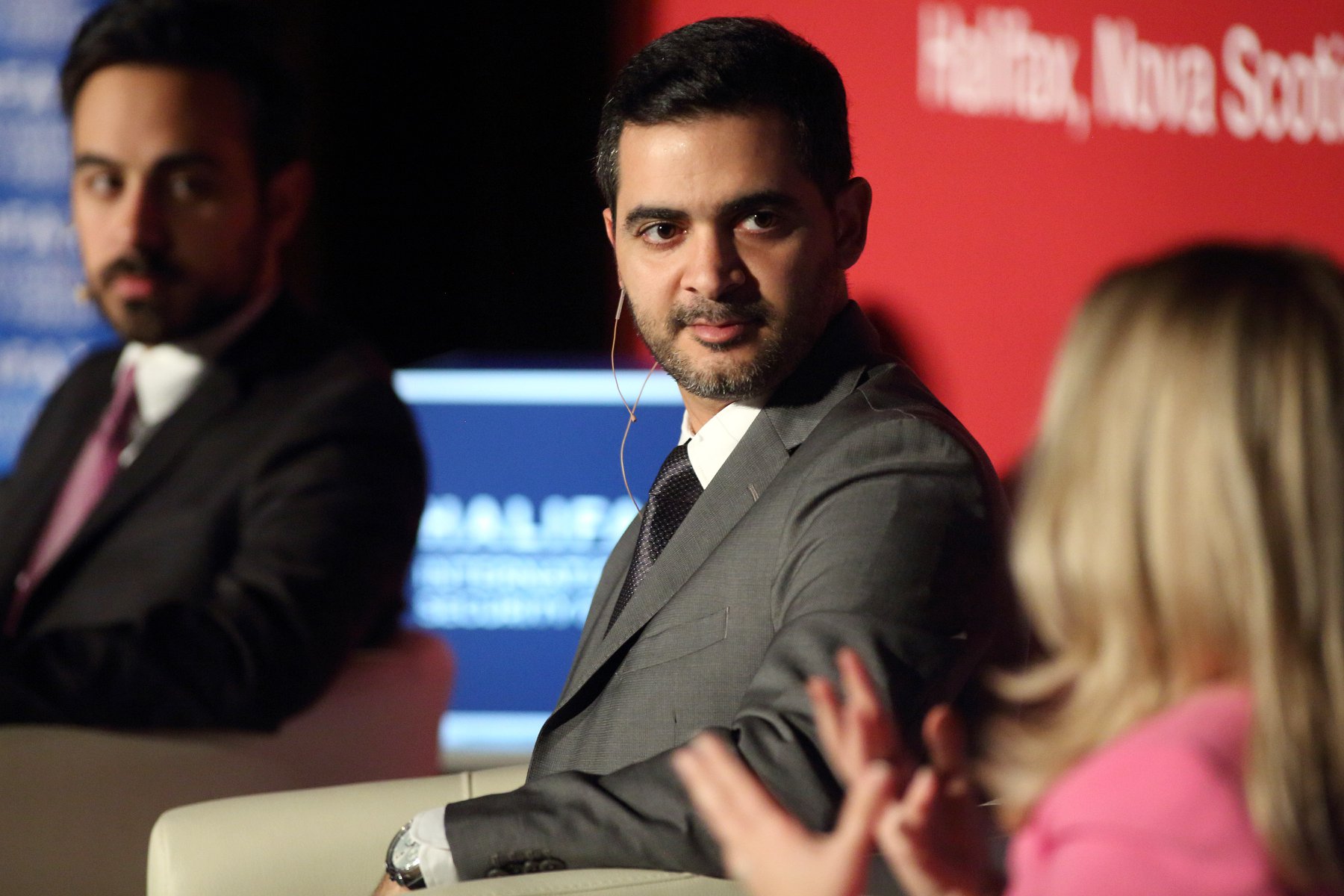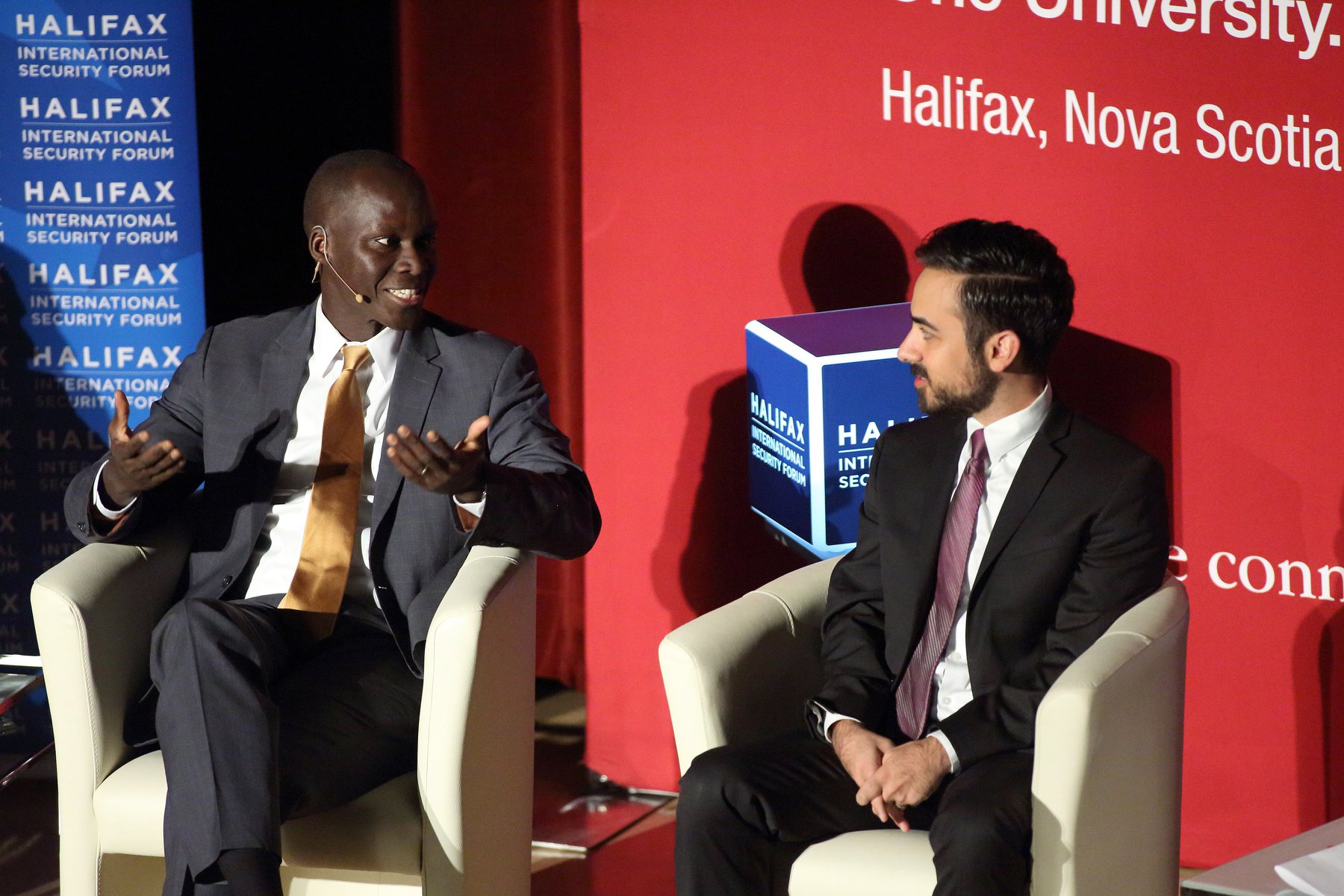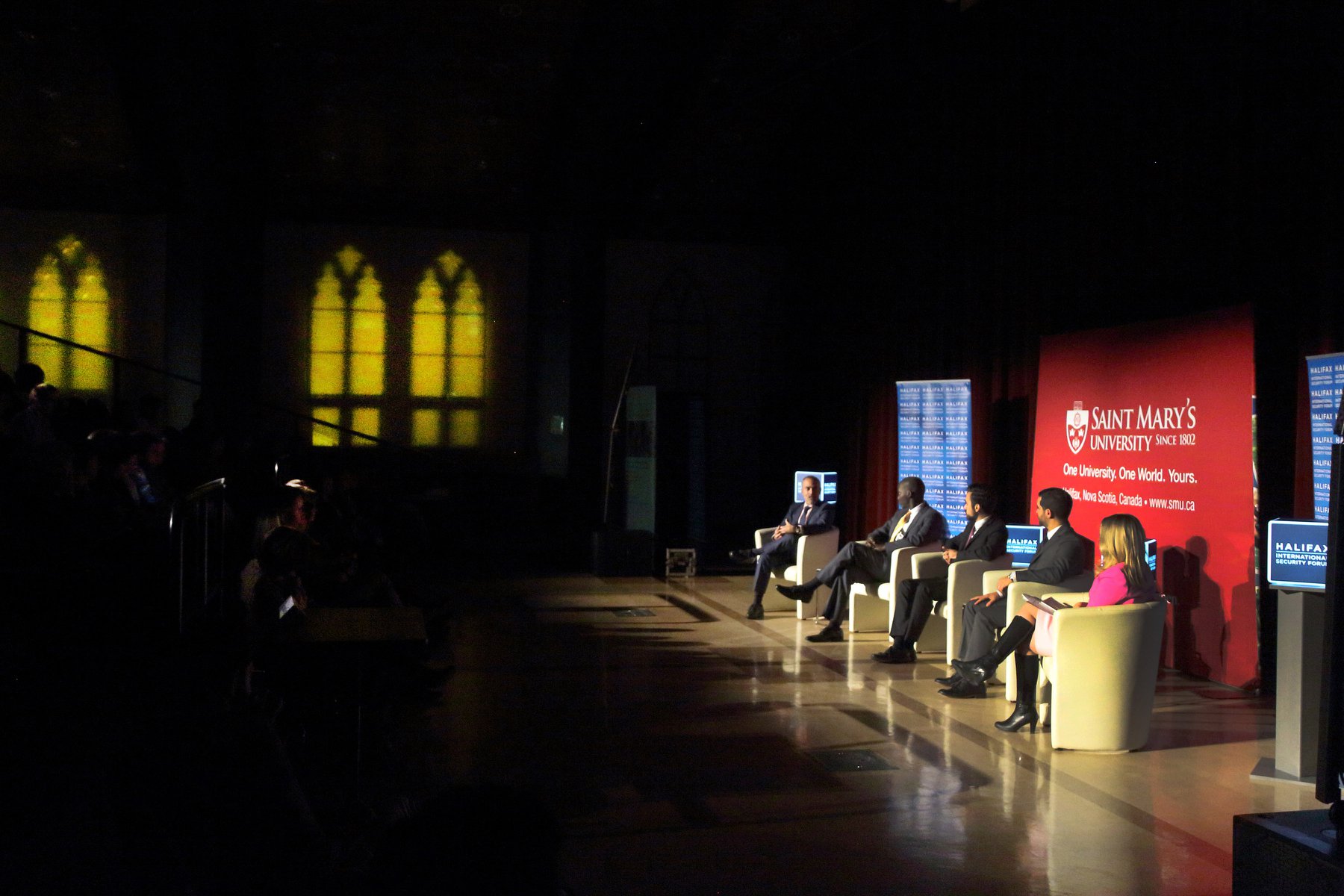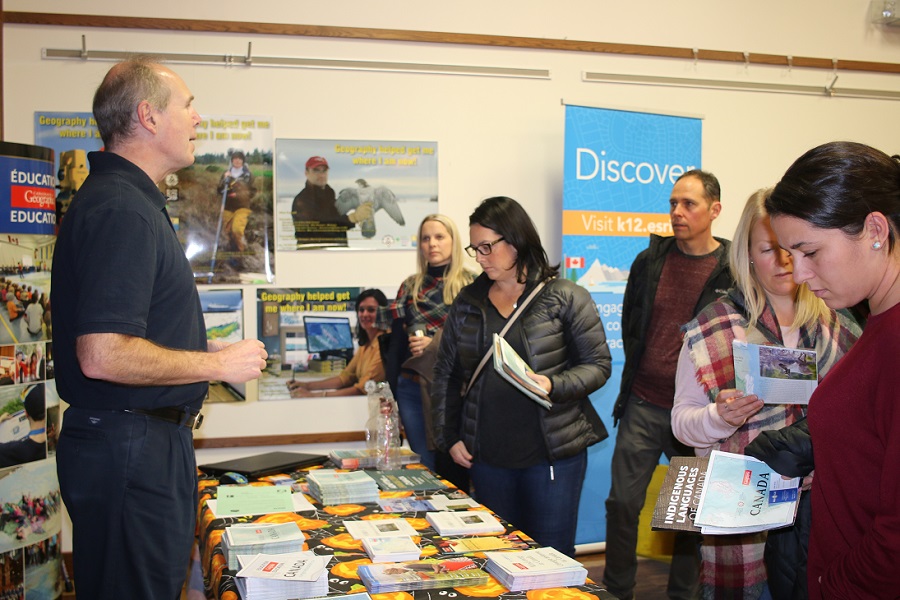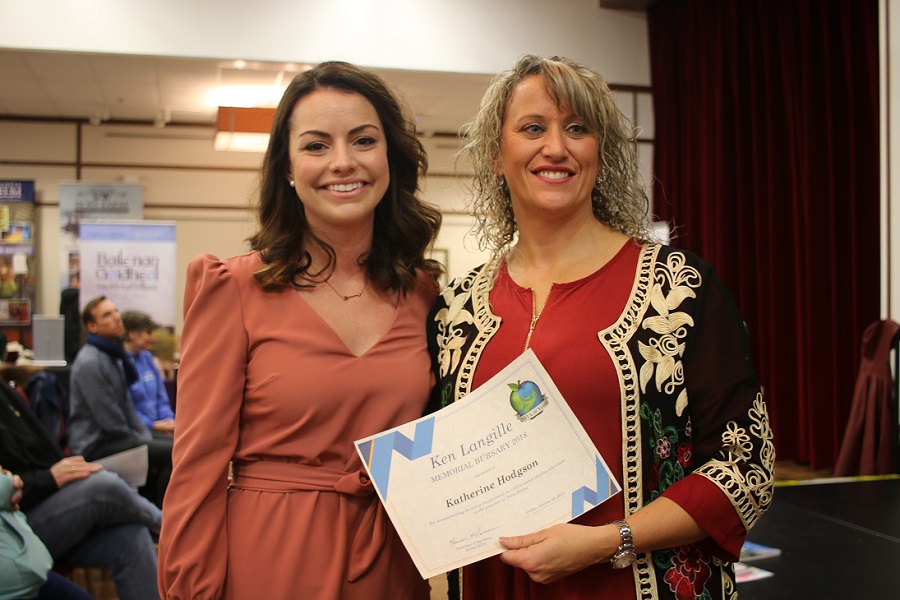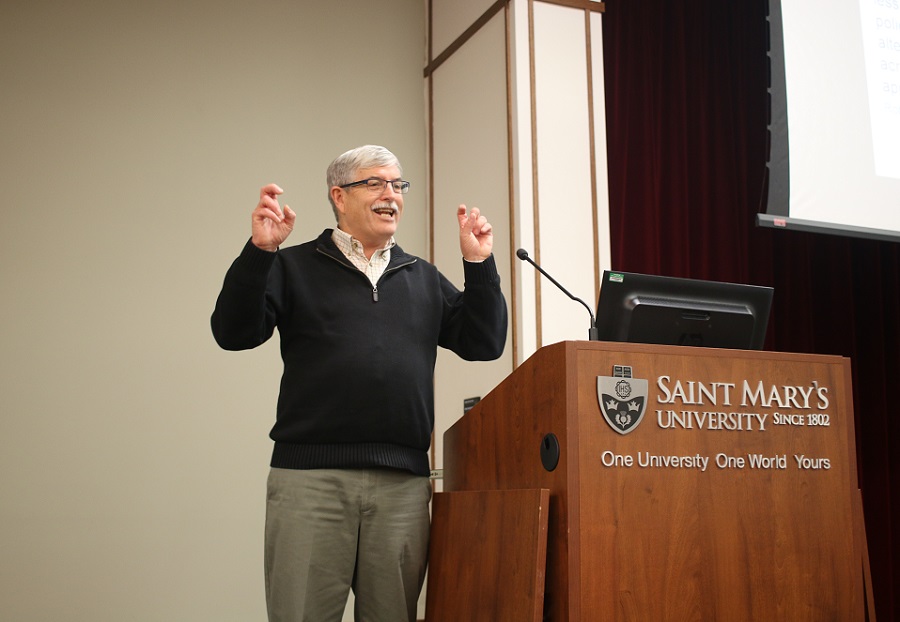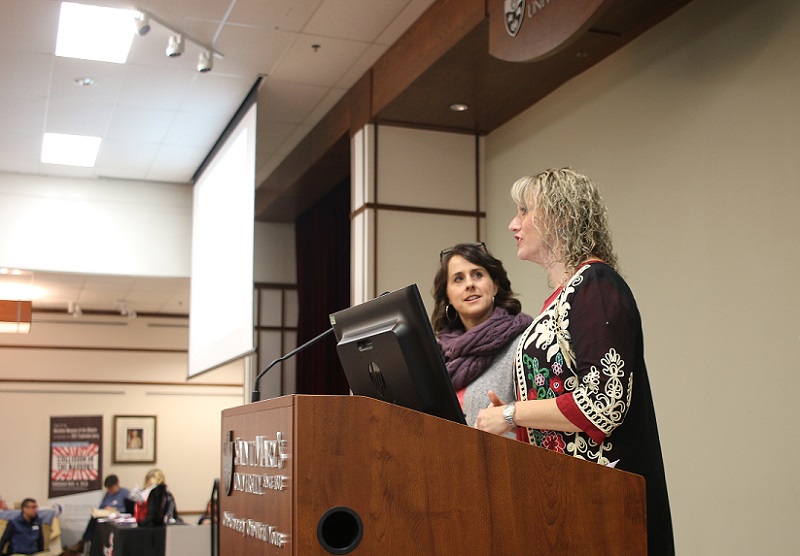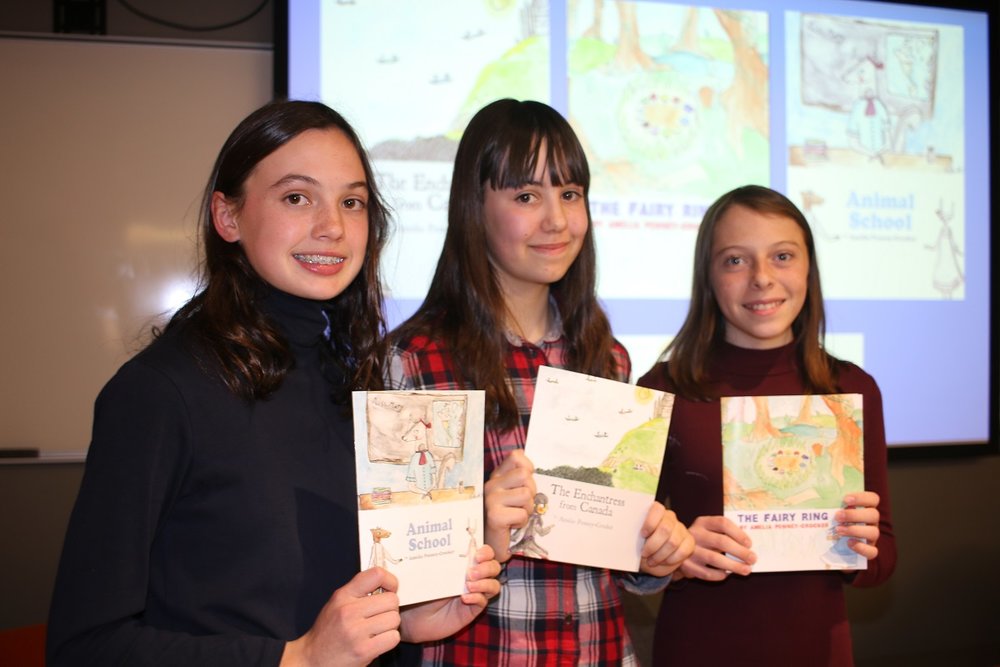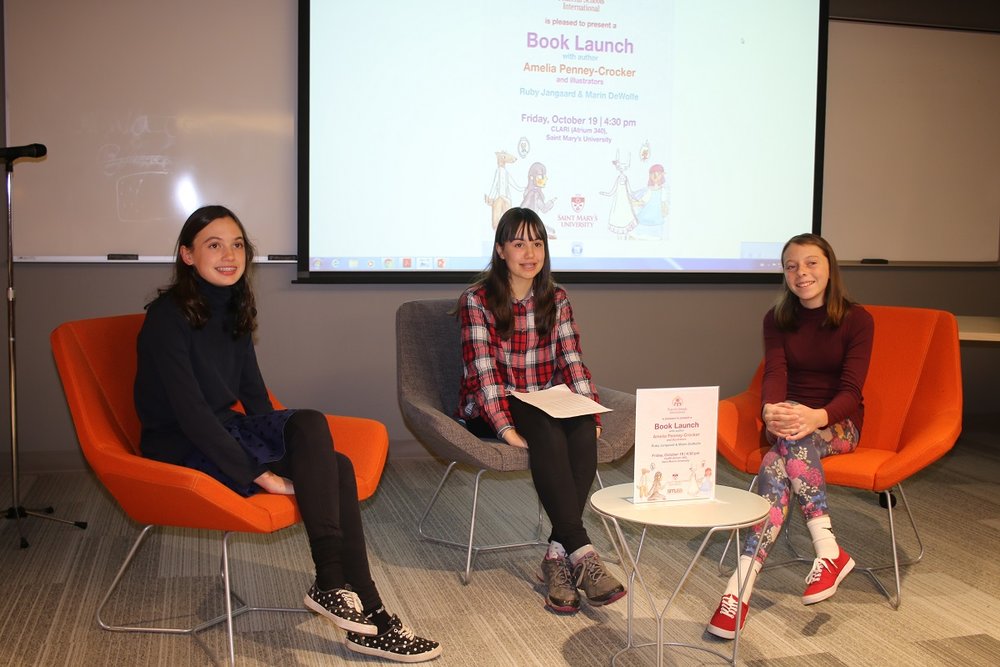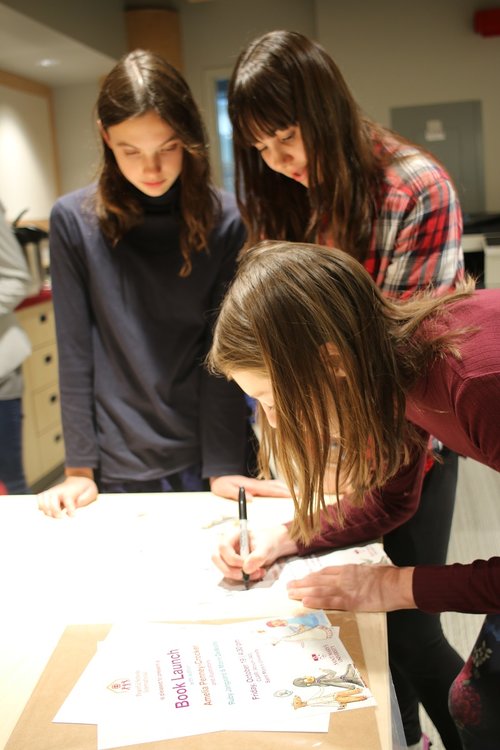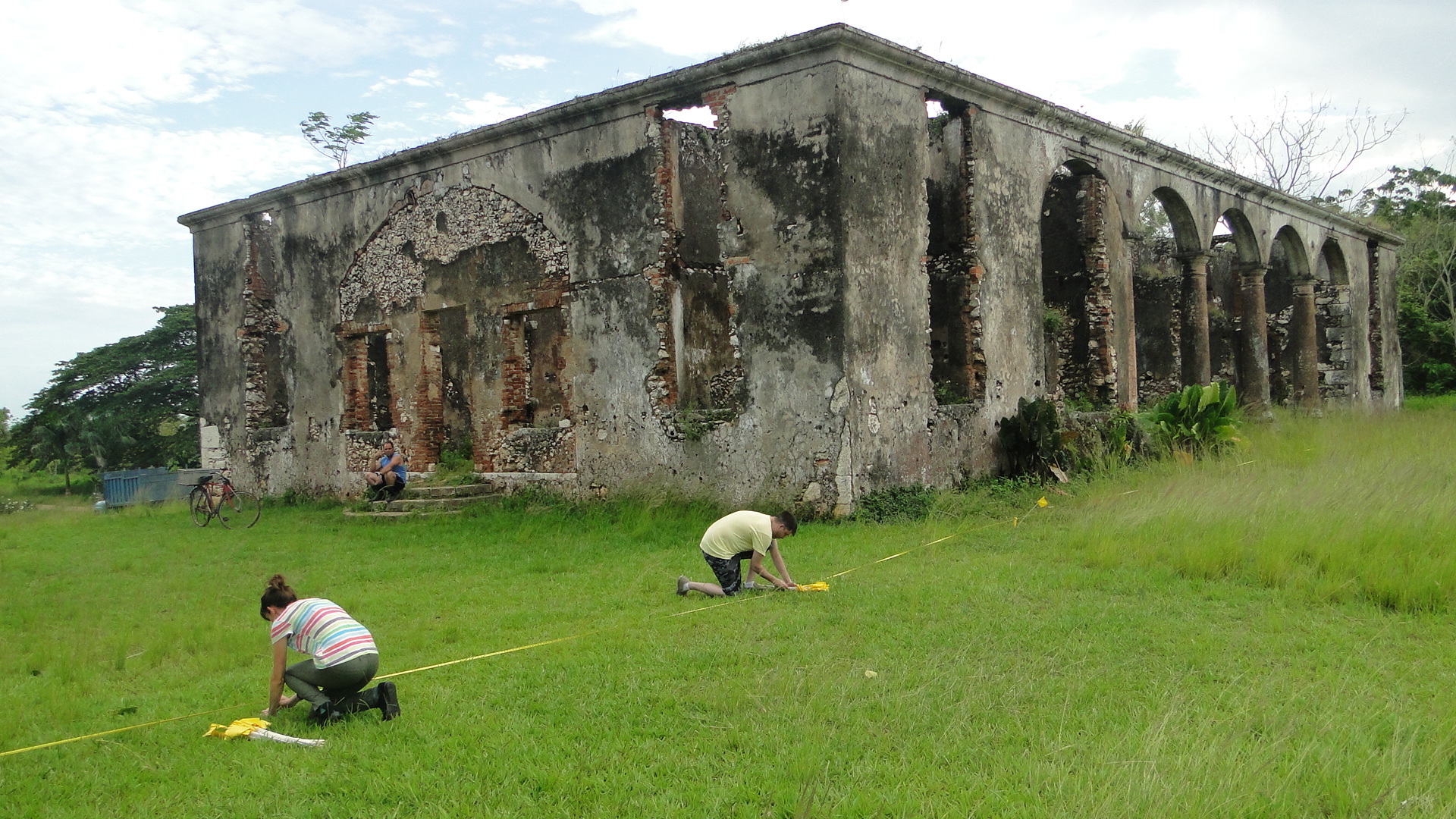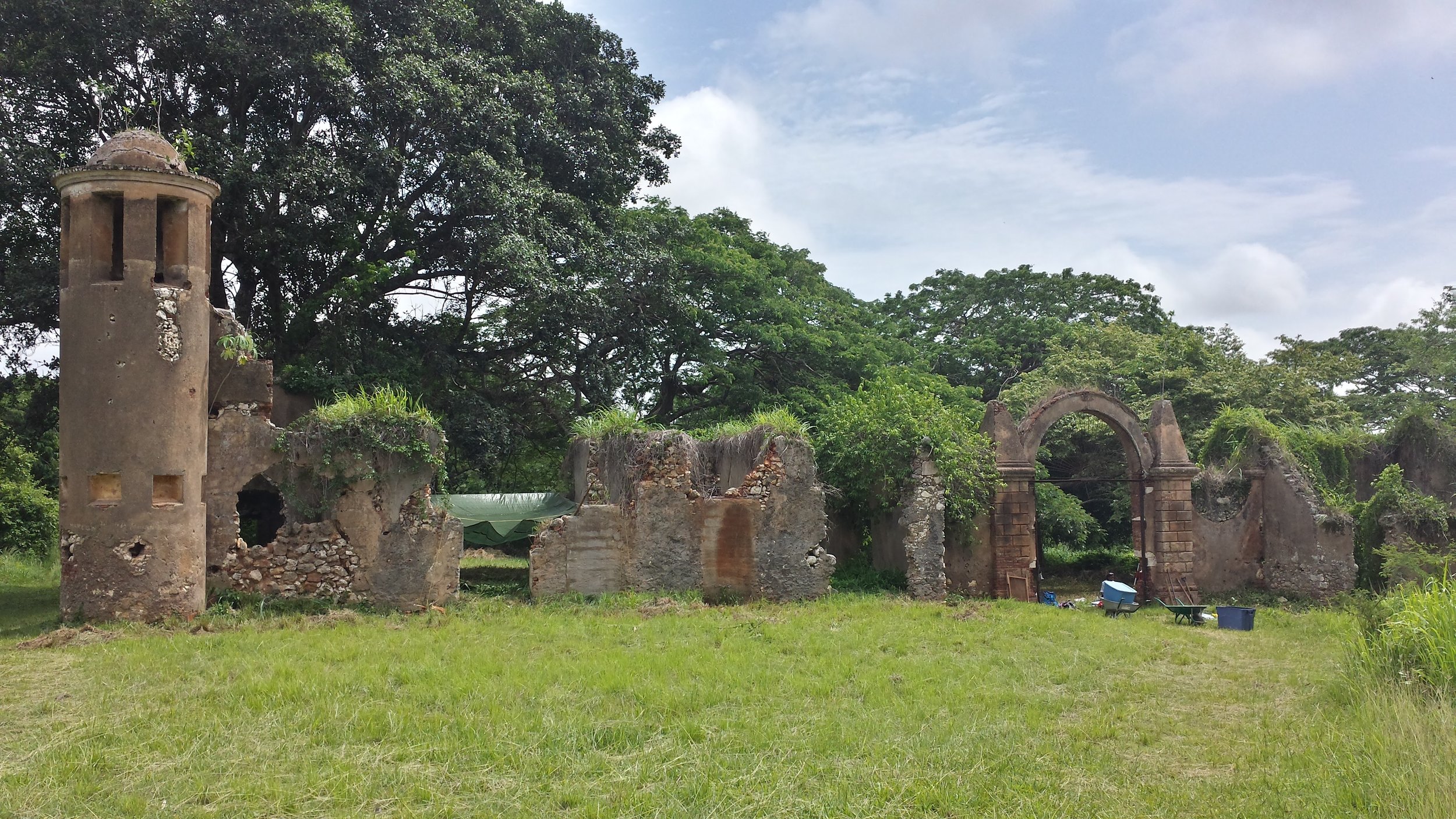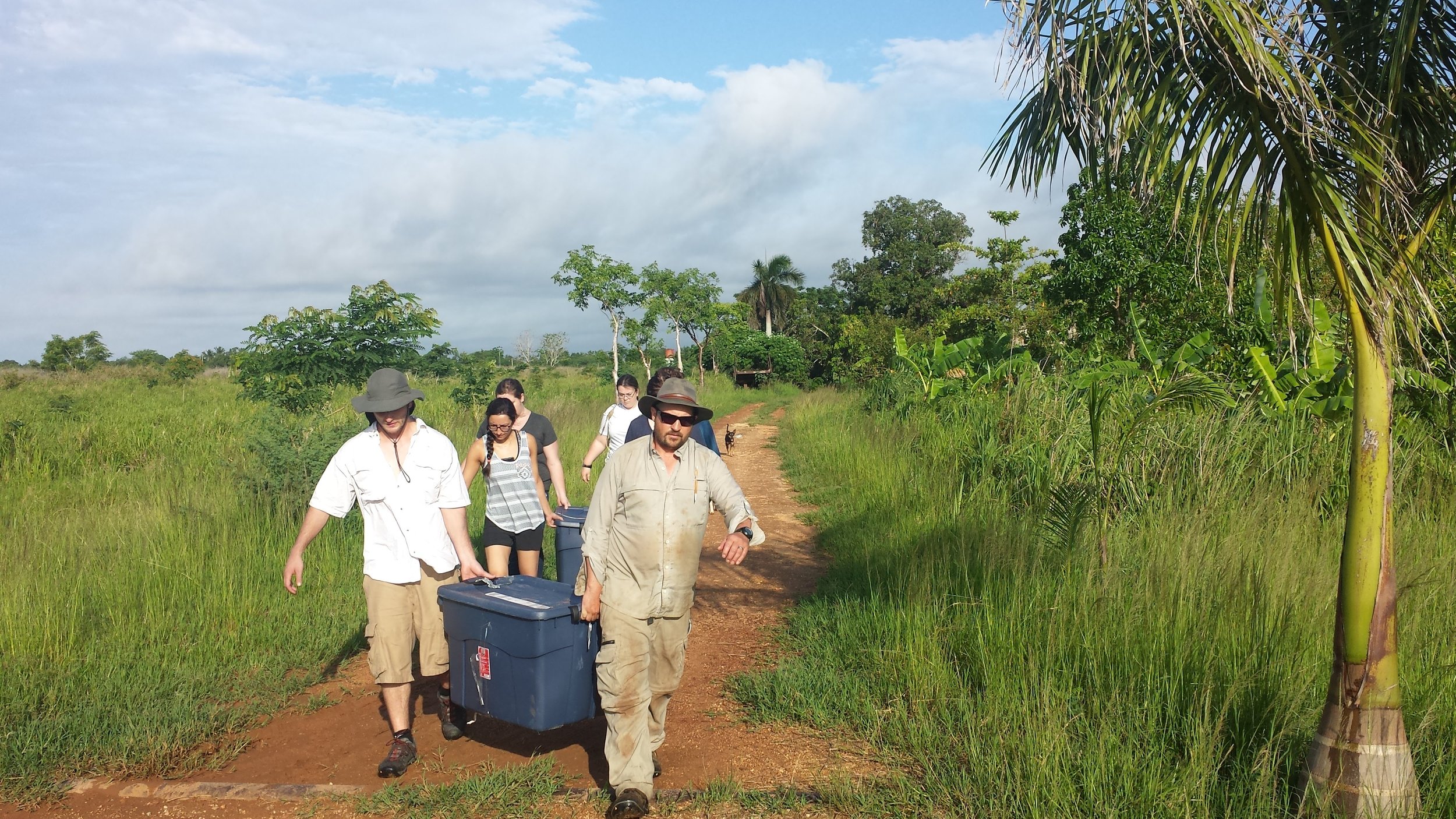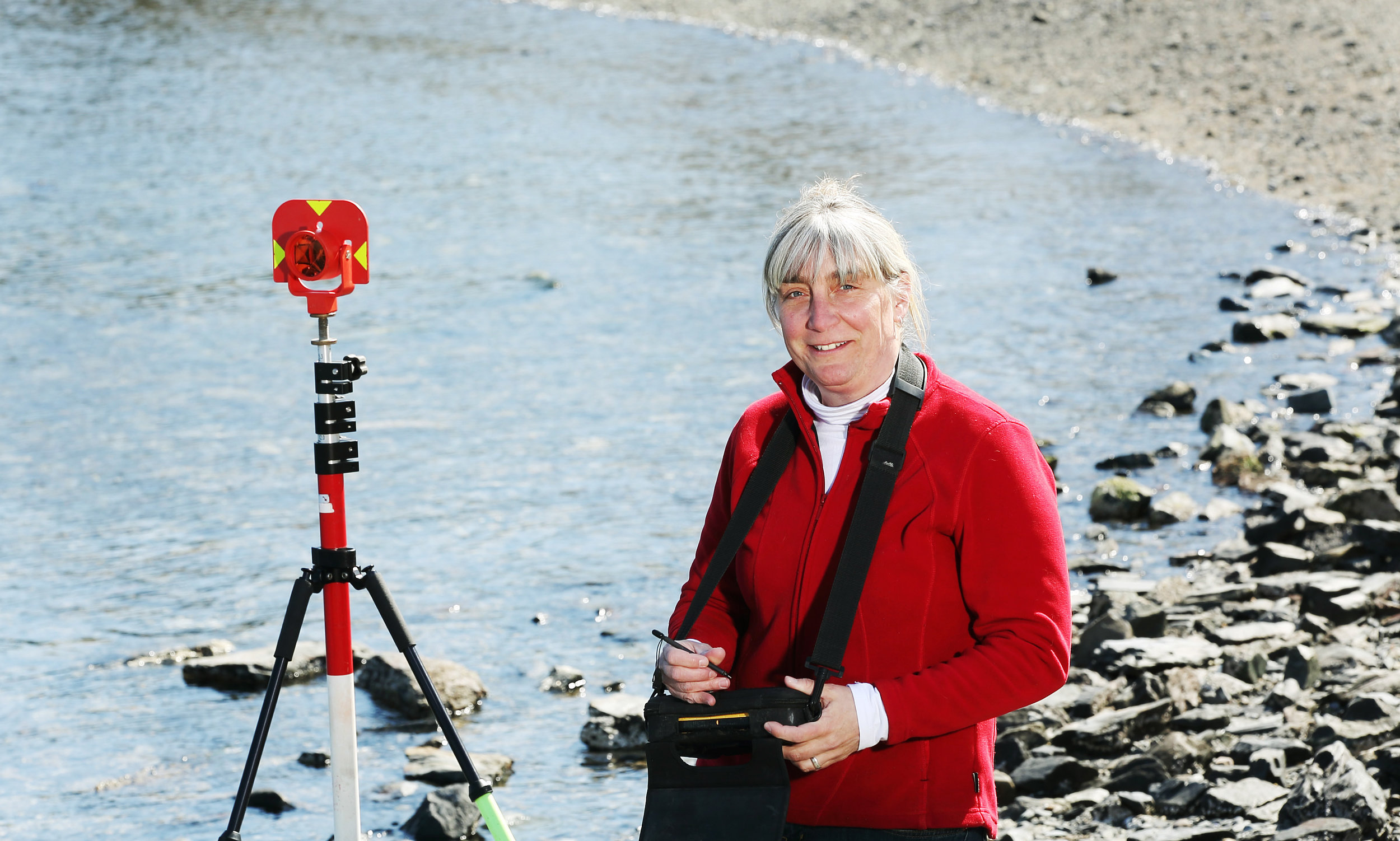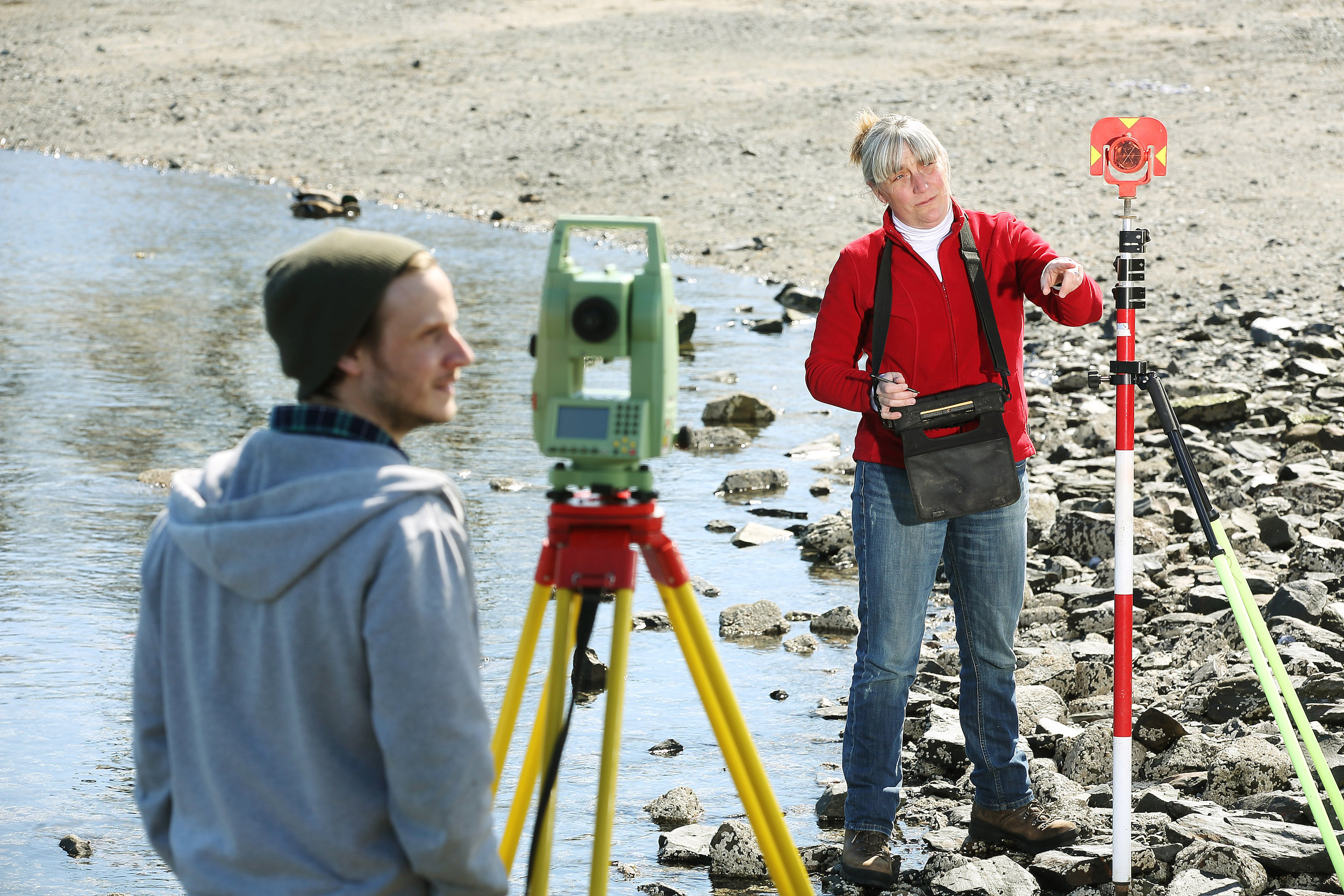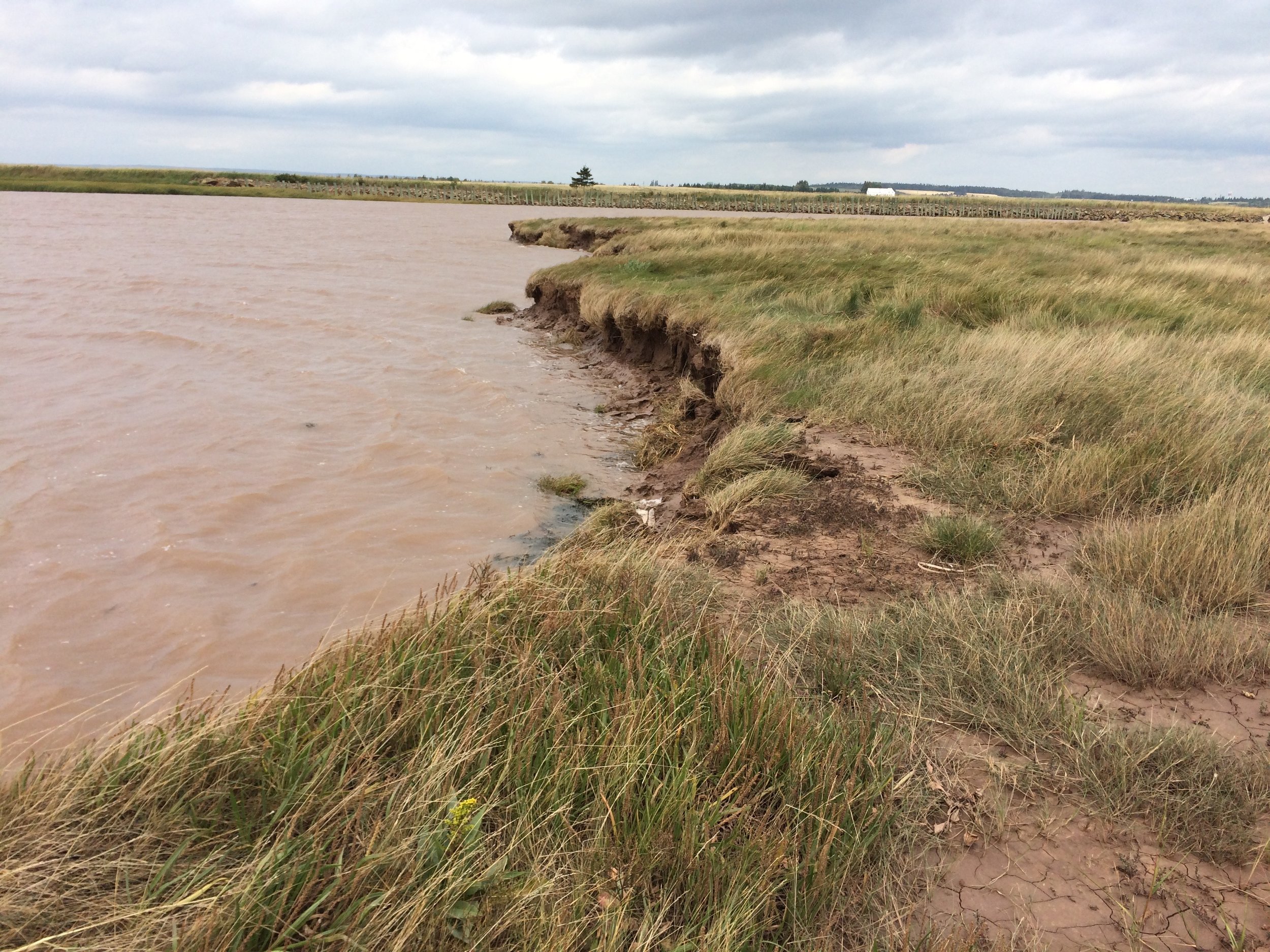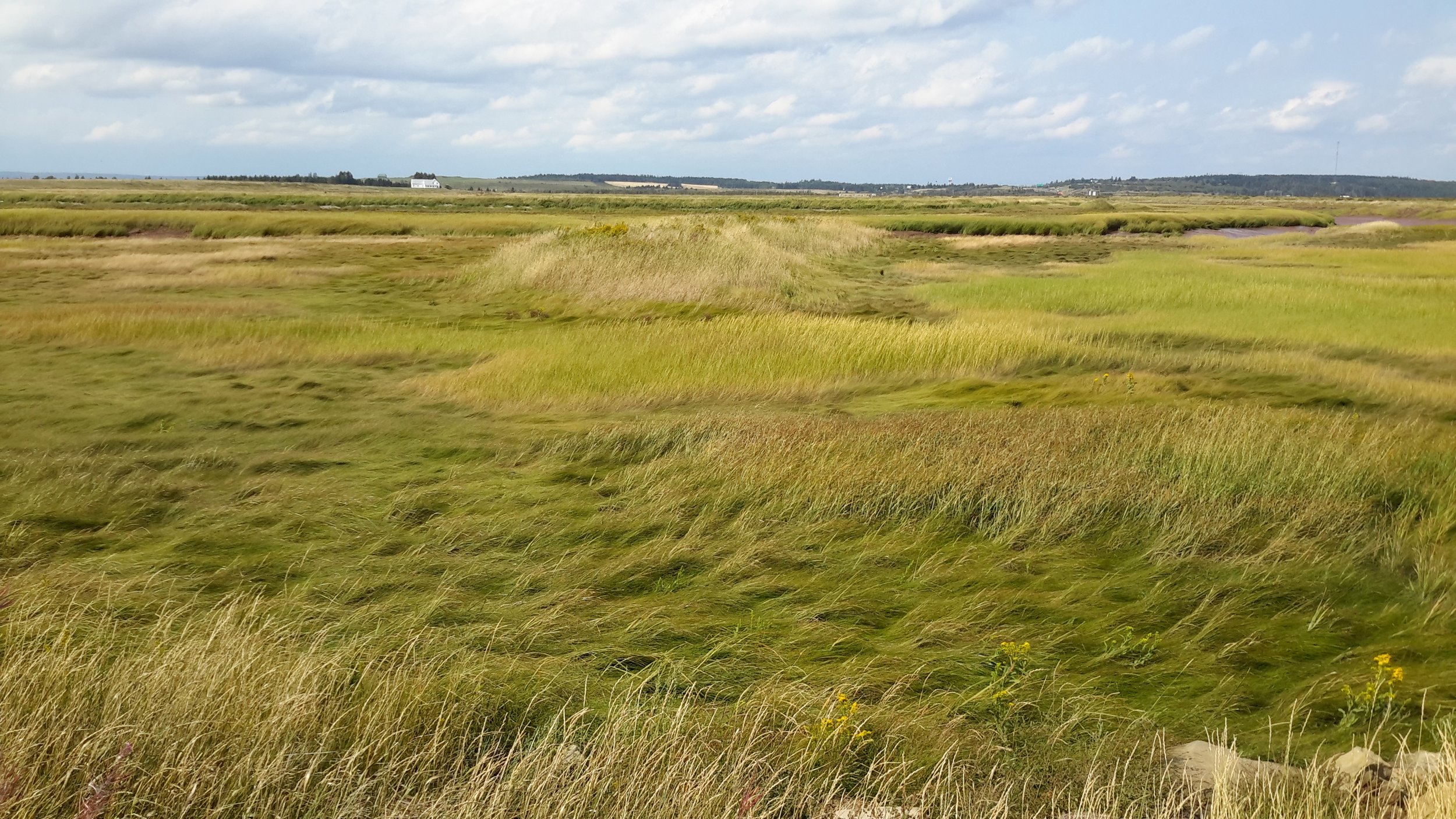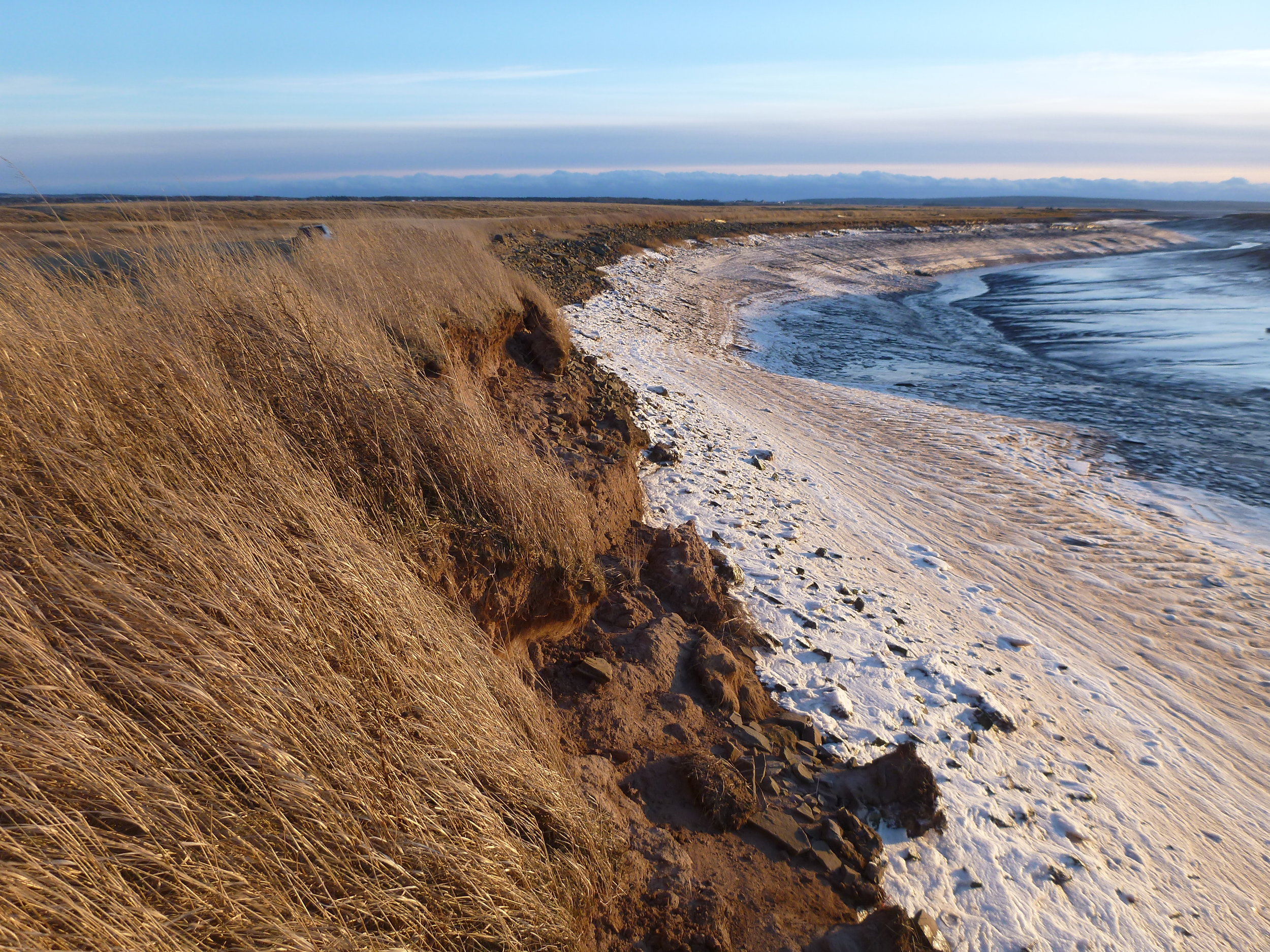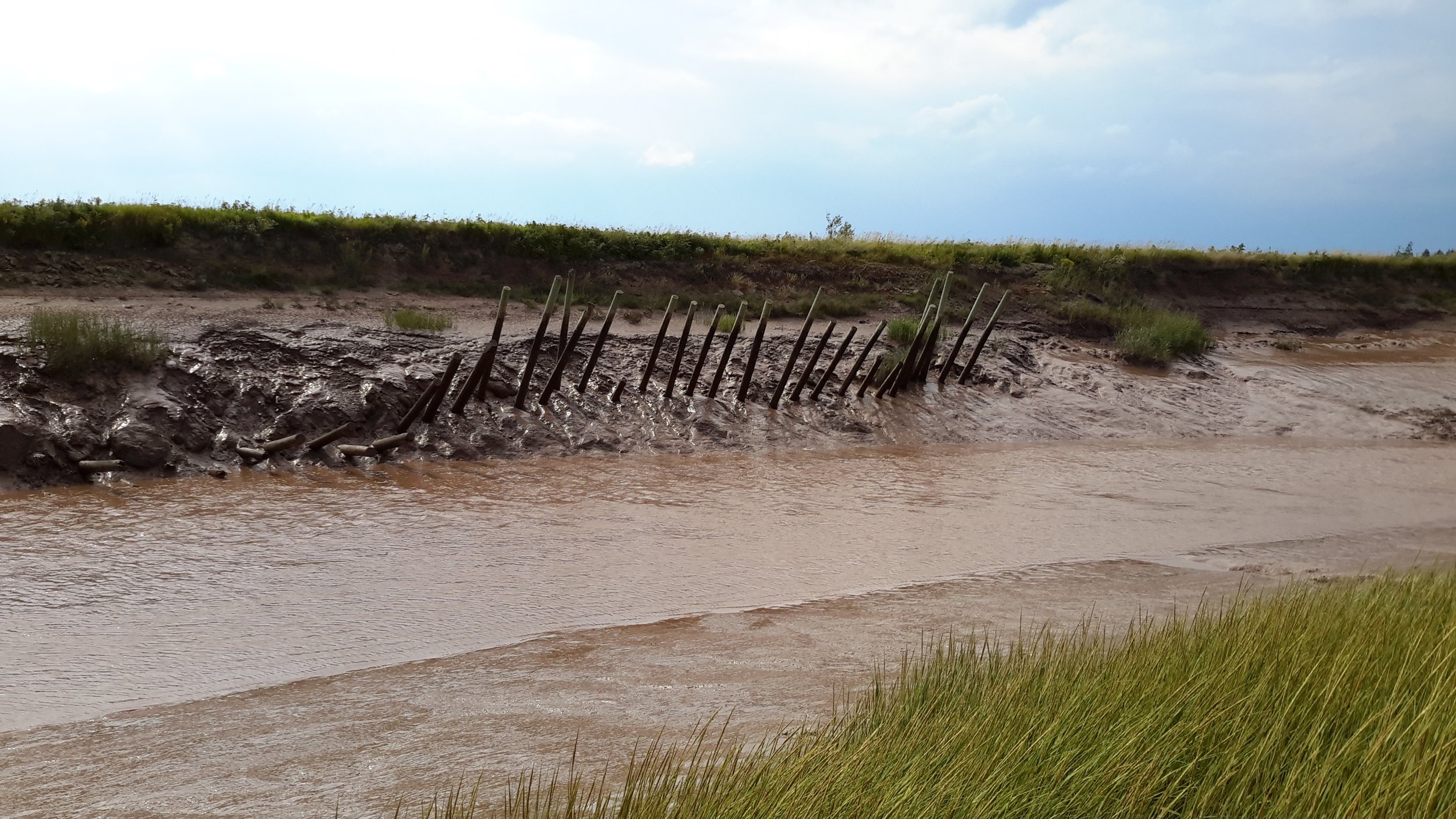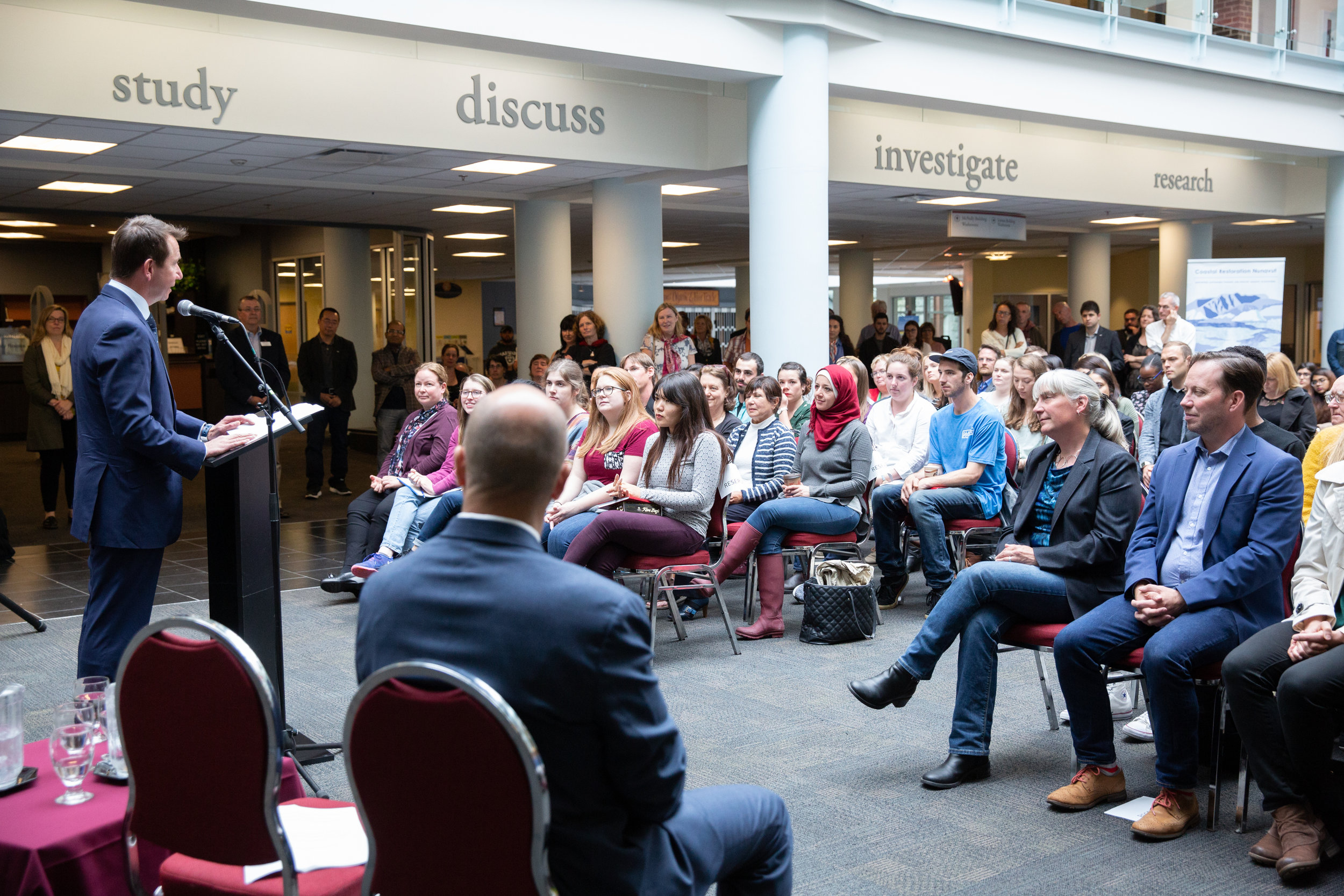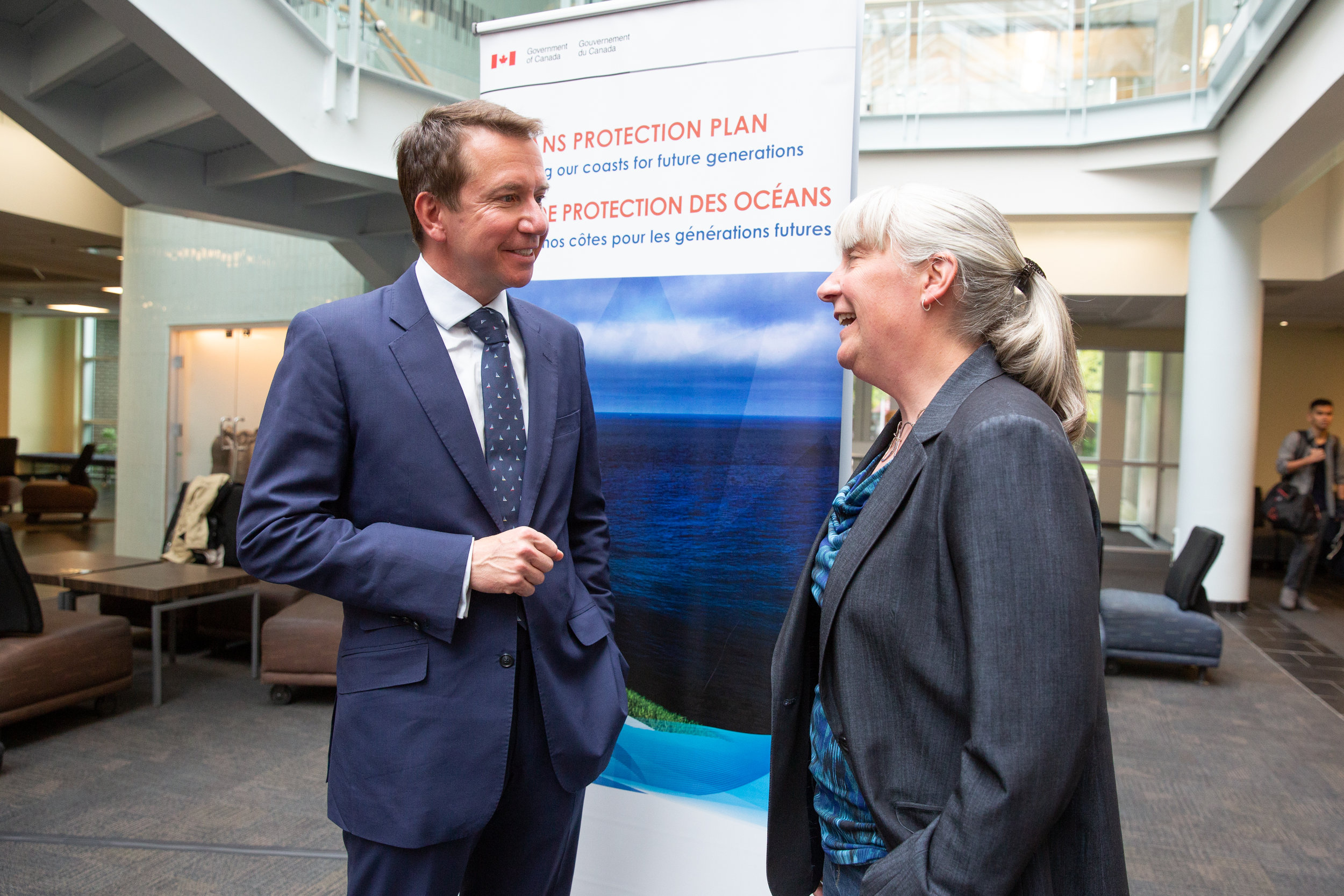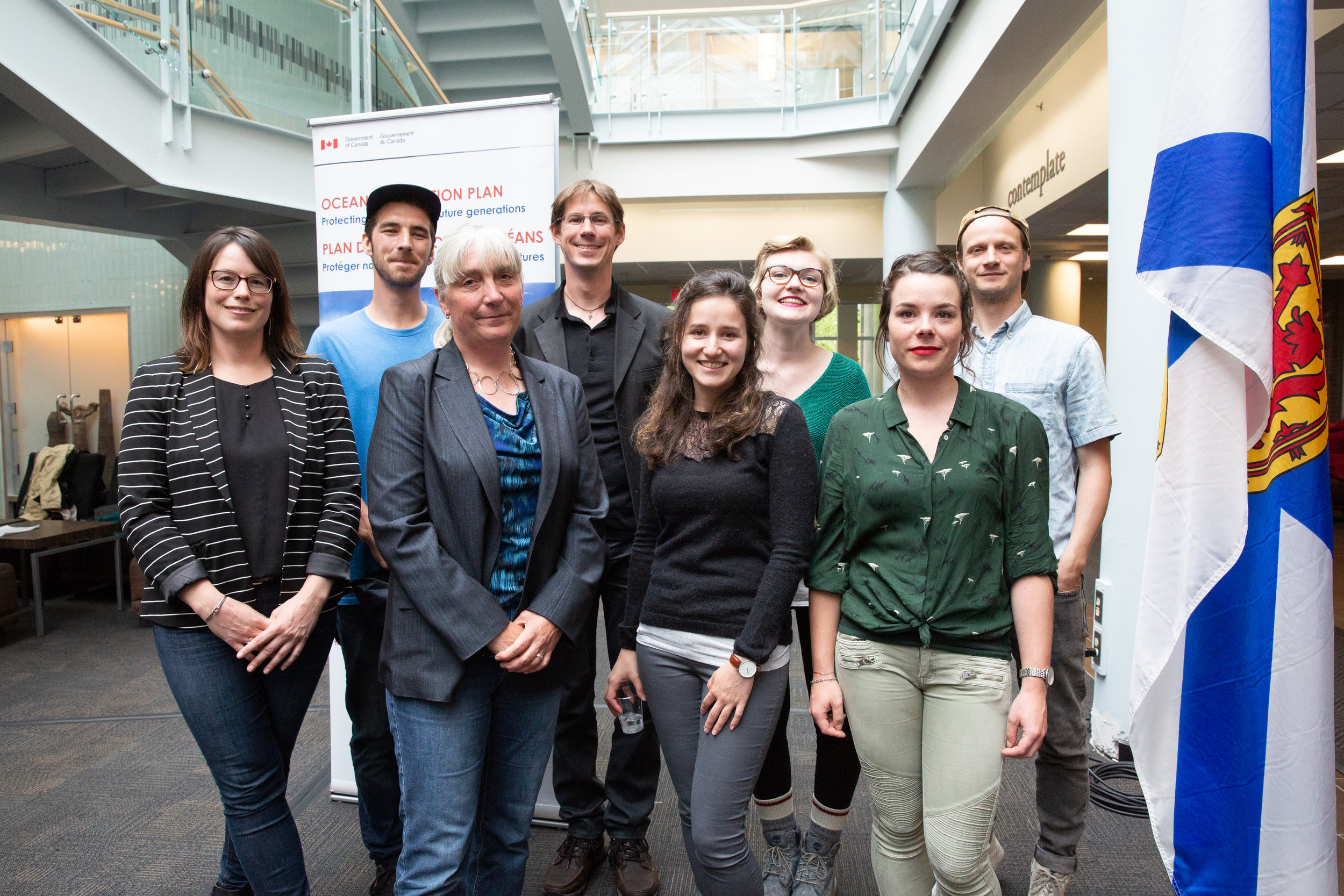Kevin Neyedley, left, and Dr. Jacob Hanley of Saint Mary’s University in Halifax are doing research supported by Nova Scotia’s Mineral Resources Development Fund. (Photo: Kelly Clark/Communications Nova Scotia)
Vapour trails from an ancient volcano may point the way to an economic opportunity in modern-day Nova Scotia.
Researchers at Saint Mary’s University in Halifax are using the composition of ancient volcanic vapours, trapped in tiny fragments in rocks, and other geological features, to learn more about a type of precious metal deposit called epithermal gold. Their work over the past year was supported by the province’s Mineral Resources Development Fund.
Geology professor Dr. Jacob Hanley said the project’s goal is to gather information on how and when the gold deposits formed, and to generate exploration criteria that may predict where the highest concentrations of gold may be found in the province. Giving companies a better idea where to explore has financial and environmental benefits.
“The more information we gain about where the deposits are sitting in this vast array of rocks which we have in the province, the better off the environment will be. The overall footprint is smaller in terms of that activity.”
Hanley and PhD student Kevin Neyedley received a $47,500 grant from the development fund in 2018 for their project, which focuses on deposits in the Eastern Cobequid Highlands. The area is about 50 kilometres north of Truro, Nova Scotia.
Continue reading the full article from the Department of Energy and Mines.







